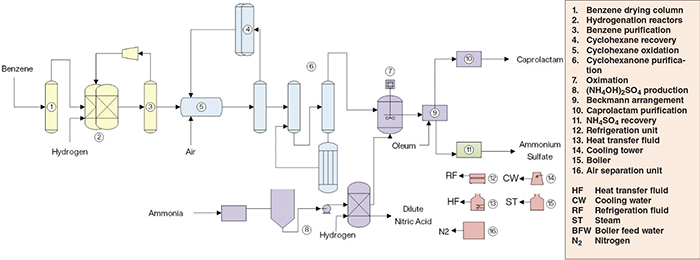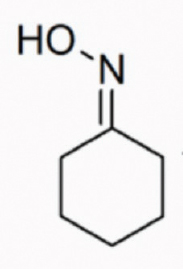
Figure 1. Caprolactam structure is shown here
Caprolactam (Figure 1) is a cyclic amide widely used as a chemical intermediate. The main forms of caprolactam are molten (liquid) and flakes. At ambient temperatures, it is a white, hygroscopic, crystalline solid.
Almost all caprolactam is used as monomer in the production of polycaprolactam, also known as nylon 6. Fibers, sheets, filaments and bristles made from nylon 6 can be used, in turn, in a broad range of products, including apparel and home furnishings; carpets; and industrial uses (tires, reinforced rubber products).
The uses and applications of caprolactam may vary according to the product grade. Commercial caprolactam is produced with high purity, where water is usually the main contaminant with concentrations around 0.1 wt.%. Caprolactam can be used in the manufacture of other products, including 6-aminocaproic acid; caprolactam disulfide; hexamethyleneimine; polyamide 6 terpolymers; poly(ether-amide) elastomers; n-vinyl caprolactam and lysine.
The process
Caprolactam production involves four major sections: (1) benzene hydrogenation; (2) cyclohexane oxidation; (3) oximation & Beckmann rearrangement; and (4) ammonium sulfate purification (Figure 2).

Figure 2. This process diagram depicts the production of caprolactam from benzene
Benzene hydrogenation. First, dried benzene is reacted with hydrogen in two steps, in the presence of platinum-based and zinc-oxide catalysts, to form cyclohexane. The intermediate is purified in two columns and hydrogen is recycled to the reactor.
Cyclohexane oxidation. The cyclohexane is converted to a mixture of cyclohexanone and cyclohexanol by liquid-phase air oxidation in the presence of a soluble cobalt catalyst. Subsequently, the cyclohexanol in the mixture is converted to cyclohexanone by vapor-phase dehydrogenation in the presence of a copper-magnesium catalyst.

Figure 3. The structure of the oxime intermediate is shown here
Oximation and Beckmann rearrangement. Ammonia is oxidized by oxygen in the presence of steam, yielding nitric oxide, which is absorbed in a solution. This nitric oxide is hydrogenated over a palladium catalyst, in the presence of dilute sulfuric acid, producing hydroxyl ammonium sulfate solution. It reacts with cyclohexanone in stirred reactors in series to form the oxime. The heterogeneous outlet is neutralized with ammonia. Finally, the cyclohexanone oxime (Figure 3) is converted to caprolactam by Beckmann rearrangement, in the presence of oleum (concentrated sulfuric acid). The product of the rearrangement, caprolactam, is purified by neutralization, extraction in the presence of toluene, and distillation. The caprolactam melt is solidified and converted into flakes.
Ammonium sulfate purification. The ammonium sulfate solution that is removed in the neutralization steps is concentrated by evaporation. Then it is crystallized, centrifuged from the mother liquor and dried.
Production pathways
This organic compound can be produced commercially from cyclohexanone, cyclohexane, or toluene as starting materials. Most caprolactam production is based on the cyclohexanone process. To a lesser extent, caprolactam is produced commercially by the photonitrosation of cyclohexane or by nitrosation of cyclohexane carboxylic acid (derived from toluene) in the presence of sulfuric acid. Ultimately, the main commercial processes employed for caprolactam production are based on benzene or toluene from BTX (benzene, toluene, xylenes), and generate ammonium sulfate as a byproduct.
Edited by Scott Jenkins
Editor’s note: Content for this column was originally developed by Intratec Solutions LLC (Houston; www.intratec.us) and is edited by Chemical Engineering. The analyses presented are based on publicly available and non-confidential information. The content represents the opinions of Intratec only. More information about the methodology for preparing the analyses can be found, along with terms of use, at www.intratec.us/che.